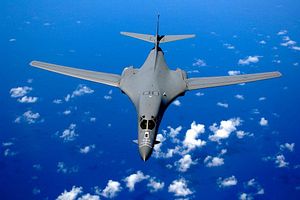The United States intends to regularly rotate long-range heavy bombers and aerial tankers through Australia in order to deepen defense ties between the two countries, the commander of U.S. Pacific Air Forces, General Lori Robinson, told reporters this week in Canberra, Australia.
She also confirmed that high-level discussions are currently underway to discuss details of the deployment of U.S. military assets in the country’s north, according to the Australian Broadcasting Corporation.
“We’re in the process of talking about rotational forces, bombers, and tankers out of Australia (Tindal and Darwin) and it gives us the opportunity to train with Australia,” Robinson said.
“It gives us the opportunity to strengthen the ties we already have with the Royal Australian Air Force (RAAF) and it gives the opportunity to train our pilots to understand the theatre and how important it is to strengthen our ties with our great allies, the RAAF.”
A spokesman for the U.S. Air Force in the Pacific told Reuters that the bomber rotations will also provide “U.S. Pacific Command leaders with a credible global strike and deterrence capability to help maintain peace and security in the Indo-Asia-Pacific region.”
The potential stationing of U.S. bombers in Australia was already discussed in 2015 when U.S. Defense Department Assistant Secretary David Shear told the U.S. Senate Foreign Relations Committee that the United States intends to place “additional air force assets in Australia” including “B-1 bombers and surveillance aircraft.”
The Australian government was quick to deny any such plans, insisting that the U.S. defense official had misspoken.
This week, however, Australia’s Defense Minister Marise Payne, while evading a specific question on the likelihood of U.S. bombers rotating in and out of the country, emphasized that the U.S. Air Force will have a larger presence in the country in the future.
“The Enhanced Air Cooperation Initiative, which is part of the Force Posture Initiative, is in development and will result in increased rotations of US Air Force elements through Northern Australia,” she said.
“Australia remains strongly supportive of the U.S. rebalance to our near region, and we work together closely in support of our common regional interests.”
Australian Prime Minister Malcolm Turnbull also refused to specifically comment on the likely stationing of U.S. bombers in Australia:
Everything we do in this area is very carefully determined to ensure that our respective military forces work together as closely as possible in our mutual national interests.
The U.S. Air Force does not currently operate B-1 bombers out of Australia. However, B-52 bombers have been rotated in and out of the country in the past by the U.S. military.
Today, during a regular press briefing, Chinese Foreign Ministry spokesperson Hong Lei commented on the U.S. plans to station long-range bombers in Australia, noting that China is “concerned.”
“Peace, cooperation and development has become a major trend of the region that all people are aspiring for. Cooperation between relevant countries should focus on safeguarding regional peace, stability, and development. Any bilateral cooperation must not jeopardize a third party’s interests,” he added.

































